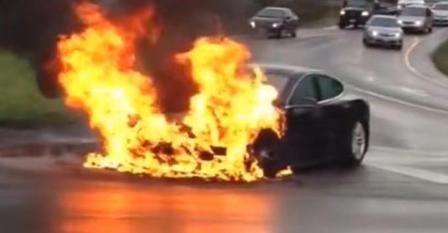Thermal runaway in electric vehicles (EVs) is a major concern for potential consumers, manufacturers and regulators, as thermal runaway of lithium ion batteries is the main cause of fires in EVs.
Several high-profile vehicle fires, stationary energy storage fires in South Korea and bus fires in China have made headlines in recent years. On the 12th of May 2020, China issued three mandatory standards for the safety of electric vehicles and their batteries. These new standards are set to be enforced as of January 2021.
The three new standards that are to be enforced relate to the Electric vehicles (EV) battery, the EV itself and electric buses. The battery regulations emphasise an improvement in battery system safety regarding thermal diffusion, external fire, mechanical shock, simulated collision, thermal and humidity cycling, external short circuit, overcharge and over-temperature. This covers the main causes of thermal runaway or fires in batteries.
In addition, thermal runaway of one cell should cause no fire or explosion in the cabin for at least 5 minutes, allowing for occupants to escape the vehicle. The battery system is required to notify the vehicle occupants of a thermal incident immediately.
More stringent requirements for preventing water ingress, ensuring proper insulation and battery monitoring are also included. An electric bus naturally has a larger battery and the new standards have more rigorous demands on battery casing collision, charging and water ingress. The standards request for appraisal of the flame-retardant performance, thermal runaway prevention and the battery management unit.
Whilst China may be the first to enforce these types of regulations, it is very likely that other countries will also be following in the near future.
Until now, specific EV safety regulations have been voluntary to comply to, this has led to a wide variety of battery design and thermal management strategies across the various EV sectors to date. According to IDTechEx’s research, over 500 GWh of electric vehicle batteries will be liquid cooled by 2030. However, this leaves much of the market utilising other methods. Manufacturers have varied between cylindrical, pouch and prismatic cells with air, water-glycol, or refrigerant based cooling.
As regulations like these are enforced, it may well push the industry towards one solution. For example, preventing propagation of thermal runaway between individual cylindrical cells is much more difficult than between separate pouches. Emerging technologies like immersion cooling, where the cells are immersed in a flame-retardant dielectric fluid may start to take a larger share of the market.
Detecting thermal events in vehicles is also a widely unexplored area of the market. There are several potential solutions to detection of a thermal event, including temperature spikes, gas ejection and voltage drops to name a few. Another consideration is how to notify passengers and if an active method of extinguishing the battery pack is incorporated into the design.
Crucially, all the methods have their limitations and it is imperative to avoid false positives and potentially extinguish a battery which is working correctly, as this is often the most expensive component in the vehicle.
Finally, these new standards open large potential opportunities in materials for battery enclosures. The materials not only have to effectively restrain a fire, but must also prevent water ingress and have a strategy to deal with a puncture of or damage to the enclosure. All of this whilst also meeting the lightweight and environmentally friendly requirements of EV manufacturers.
In summary, standards like the ones announced for China will start to be enforced around the world. As this occurs, manufacturers will have to either adapt their current designs or develop new ones. The timeframe in China’s case is also very short, especially with COVID-19 currently slowing down the automotive industry.
This opens many opportunities for materials and sensors suppliers but also for industries relating to the simulation and design of battery packs for electric vehicles.





